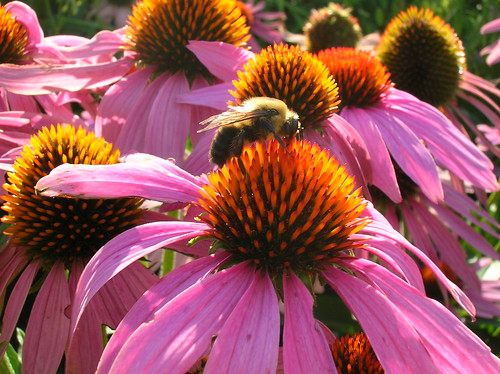
Every time you walk into your garden to enjoy a beautiful flower or pick a fruit, think about thanking a bee, butterfly or hummingbird. These and other kinds of animals are pollinators and the subject of USDA’s participation in the North American Pollinator Protection Campaign which celebrates National Pollinator Week June 18-24.
Think about the abundance of fruits and vegetables bountifully displayed when you visit a local supermarket or farmers market. That wealth of choice resulted from the thankful activity of the essential world of pollinators.
Pollinator species provide significant environmental benefits necessary for healthy, biodiverse ecosystems. USDA assists producers in promoting wise conservation stewardship, including the protection and maintenance of pollinators, and their habitats on working lands and wildlands. More than 80 percent of the world’s flowering plants require a pollinator to reproduce. Animals that assist plants in their reproduction as pollinators include: species of bats, butterflies, moths, flies, birds, beetles, ants, and bees.

Why do pollinators visit flowers? Pollinators visit flowers in search of food, mates, shelter and nest-building materials. The secret bond of the partnership is that neither plant nor pollinator populations can exist in isolation – should one disappear, the other may be one generation away from disaster.
Pollinators obtain food in the form of energy-rich nectar and/or protein-rich pollen from the flowers they visit. In return, the pollinated flowers are able to develop and produce seed. While food is often a sufficient lure for pollinators, flowering plants also attract pollinators using a combination of shape, scent and/or color. For example, some plants use mimicry to deceive animals into visiting their flowers without having to provide a reward. The PollinatorLIVE distance learning program for young students has more information on the health of the pollinator population.
So, the next time you enjoy a slice of watermelon or pumpkin pie, take a moment and thank the pollinator that made it all possible.
Learn more about pollinators from the U.S. Forest Service.


